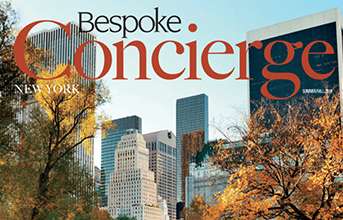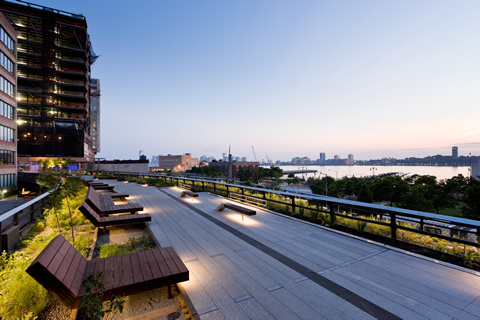
The West Side’s stunning architectural marvel, the High Line, takes visitors and locals to new heights as it celebrates its fifth year in 2014.
By Keith Loria and Bespoke Magazine Staff

Tucked just below New York’s glittery surface is a space blanketed in green. Millions of visitors every year flock to this wonderland for its botanical beauty and captivating views. Situated on the West Side of Manhattan, the High Line is a place unlike any other. The urban park—which saw its first section open five summers ago—blends blossoming plants and innovative artwork with unique architectural elements in a mile-long stretch that runs along 10th Avenue from Gansevoort Street to West 30th Street. Perhaps the most interesting facet of the High Line, however, is that it was built on a section of the former New York Central Railroad—three stories above the ground.
Planting the Seed

Throughout the mid-1800s, railroad tracks paved Manhattan’s West Side. As freight train traffic collided with regular street traffic, a multitude of accidents occurred, and 10th Avenue took on the ominous nickname “Death Avenue.” With no formal safety efforts in place, public uproar over the hazard prompted the New York Central Railroad to create the West Side Improvement Project. The $150 million plan—which amounts to more than $2 billion today with inflation—entailed building a 13-mile-long structure that would eliminate freight train traffic from the streets by lifting it 30 feet.
A common sight until the 1980s, trains rolled right inside of buildings, transporting goods directly to factories and warehouses via the High Line. As transportation options progressed over time, the once-necessary improvement became dispensable, and a growing number of people wanted the structure demolished.
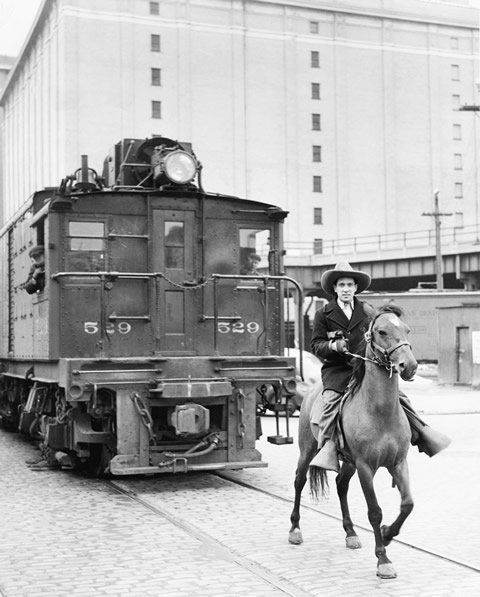
It took two residents of the High Line neighborhood, Joshua David and Robert Hammond, to save the railway from its destructive fate. The two launched Friends of the High Line in 1999 to preserve and maintain the structure by turning the scraps of metal into green space.
“The idea for the High Line is steeped in community,” David says. “We were just two guys from the neighborhood that read a New York Times article about the High Line’s proposed demolition and wanted to get involved. We raised the flag, and the community rallied with us. It seemed like an impossible dream, but we worked together to make it a reality.”
Layered Lawns
Designed by landscape architecture firms James Corner Field Operations and Diller Scofidio & Renfro, the High Line is considered by many a modern architectural marvel. Accessed by nine different stairwells scattered across 10th Avenue, the High Line opens up to a combination of concrete planked pathways and naturalized planting.
Upon entering the linear park at its southernmost section in the Meatpacking District,
visitors step into the Gansevoort Woodland, where shrubs and trees sprout between the original metal tracks that were reinstalled as a design element. Just beyond the area is the 14th Street passage, a covered corridor that features structural relics of the former railway, reminding visitors of its industrial past.
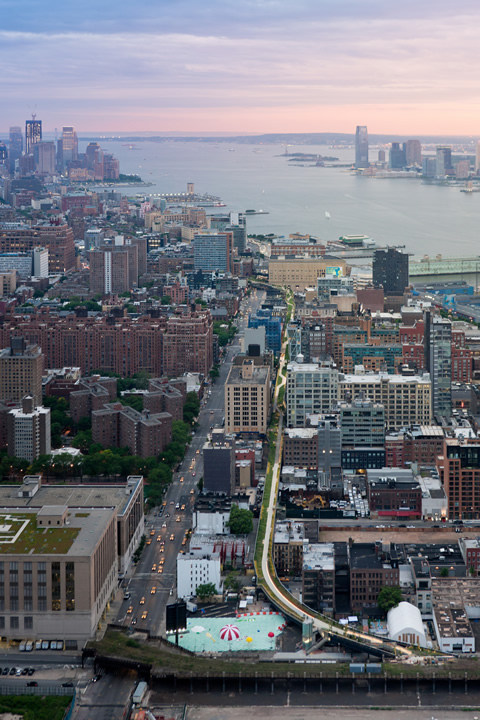
Between 14th and 15th streets, the Diller-von Furstenberg Sundeck offers a comfortable place to relax. Wooden chaise lounges border the open-air walkway, providing seating for visitors to take in magnificent views of the Hudson River in the distance. The sundeck is also the site of the High Line’s popular water feature, a wading pool that skims the upper walkway.
Continuing along the path, visitors enter a semi-enclosed passageway through the Chelsea Market building. Here, Brooklyn-based artist Spencer Finch transformed the abandoned windowpanes on one of the walls into a colorful exploration of the Hudson River by installing his stained glass artwork, “The River That Flows Both Ways.”
At the High Line’s midpoint is the 10th Avenue Square, complete with bleacher-like benches for visitors to relax while peering at the hustle and bustle of the city streets. As guests approach West 21st Street, they pass through the Chelsea Thicket, a narrow strip of the High Line that features a dense cluster of short trees for a more enclosed feeling. Floral species like winterberry, redbud and American hollies also grow here and add varying colors year-round.
Indicating a new section of the park, the trail then opens up to a gathering space known as the 23rd Street Lawn. The grassy area contains reclaimed teak benches ideal for a lunchtime respite—pack a picnic and settle in for an afternoon of people watching.
A couple of blocks away is a section dedicated to Philip and Lisa Maria Falcone, who donated more than $10 million to the project. The Falcone Flyover at West 25th Street is a metal walkway located 8 feet above the High Line. Flanked by a grove of magnolia trees, the flyover allows visitors to walk atop tree canopies while gazing below at the budding moss and groundcover. For added vistas, the area also leads to a platform called the Viewing Spur at West 26th Street. Furnished with an outward-facing bench, the platform is framed by a metal rectangle that is meant to resemble the billboards that were once attached to the High Line.

As the path curves toward the Hudson River, visitors can frolic through the wildflower field, where numerous species of grass and flora grow next to a radial bench that stretches an entire block.
An Artistic Touch
With the updated High Line also came a revitalization of the surrounding area. Complexes that once featured warehouses and factories in the Meatpacking District have been converted into boutiques, museums and design studios. Likewise, West Chelsea—which was a hub of industrial buildings in its past life—embraces its new role in the community as a home to visual arts. In fact, it contains the world’s largest concentration of art galleries, with cafes and shops interspersed in between to complete the area’s framework.
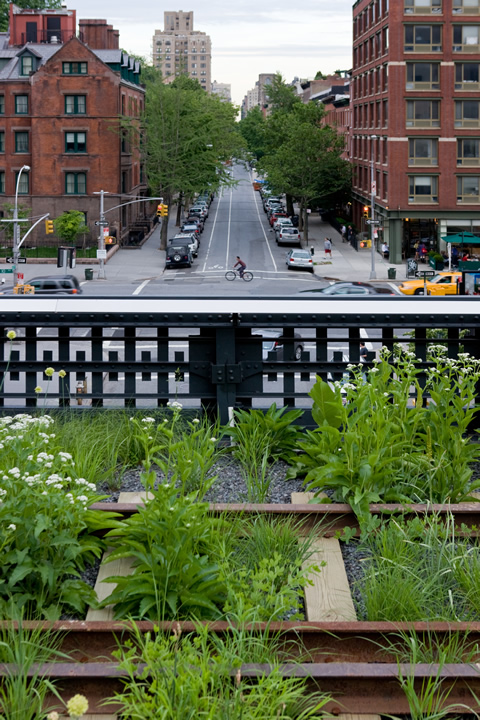
The renaissance of the rail line has served as a catalyst for a boom of residential developments. And though existing real estate in the area continues to attract floods of homeowners, investors and tenants to the neighborhood, architects are drawn to the West Side to build other interesting structures, such as the upcoming Hudson Yards, a new development slated to open in 2015 with hundreds of shops, 20 restaurants and 14 acres of open space.
“In a place like New York that changes so much, things that survive have the power to transport you,” David says. “That’s what the High Line does for people, and why I believe New Yorkers are drawn to it and why the neighborhood has developed in response to it.”
The High Line accents the gallery counterparts of the surrounding city with its own artwork program, which invites artists to display their masterworks along the park trail.
“High Line Art commissions specific artworks that provide park visitors with a unique and enriching experience, and introduces challenging works by contemporary artists to a broad audience,” says Megan Freed, director of communications for the High Line. “Having recurring art commissions on the High Line connects us to our neighborhood and city. It offers a way to engage our neighbors and provides an opportunity for New Yorkers to come back and experience the High Line time and time again.”
In May, artist Ed Ruscha presented his first-ever public commission in New York City with “Honey, I Twisted Through More Damn Traffic Today.” The hand-painted mural, which is based on a 1977 pastel drawing, can be seen on the side of an apartment building next to the High Line at West 22nd Street until May 2015.
Scattered across the High Line is “Archeo,” an outdoor group exhibition that explores the work of numerous artists who repurpose outdated technology and machinery to reflect society’s usage of past devices. New York-based artists Antoine Catala and Marianne Vitale, as well as international artists Isabelle Cornaro, Jessica Jackson Hutchins, Gavin Kenyon, Josh Kline and Yngve Holen, each contributed to the exhibit.
Throughout the year, artists are also invited to perform for visitors, creating a natural theater on the High Line. The park hosts Make Music New York, a free outdoor concert event, in the summer and winter seasons.
Thriving Roots
In order to bring more happenings—and accommodate more visitors—to the park, an additional half-mile of land is scheduled to open at the High Line at the Rail Yards this fall.
“With the opening of the High Line at the Rail Yards (also known as Section 3), visitors will be able to walk on the High Line from the southern entrance at Gansevoort and Washington streets to the northern terminus at 34th Street,” David says. “The continuous 1.5-mile walk will connect the distinct and dynamic West Side neighborhoods, from the Meatpacking District to West Chelsea to Hell’s Kitchen.”
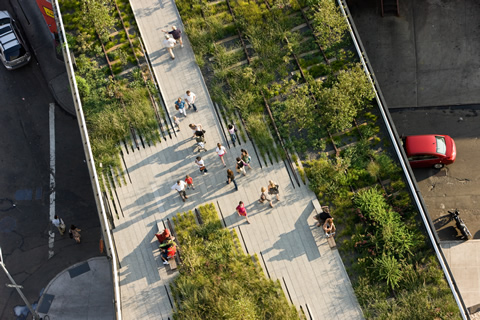
The third section will bring a more natural aesthetic to the manicured park by introducing a wild landscape reminiscent of the High Line’s past. Native plants such as milkweed, bush clover, rough dropseed and early goldenrod will be added to an interim walkway. Additionally, there will be a child-friendly exploration area that exposes the framework of the High Line’s original beams, but is covered in a thick rubber safety coating. Surrounded by lush gardens and peel-up benches, a bridge at 11th Avenue will offer panoramic views of the city and Hudson River.
The splendor of the High Line is in its ability to merge the city’s industrial roots with its flourishing future. “The High Line serves as a profound reminder of the extraordinary things we can achieve when the public and private sectors work together for the common good,” David says. “The community was the guiding force for saving the High Line, and we returned a place of community to the community.” B
***
Daily Itinerary
Tuesdays:
Stargazing on the High Line brings Amateur Astronomy Association telescopes to the area between West 13th and 14th streets, allowing visitors to gaze up at the night sky.
Wednesdays:
Wild Wednesdays at the High Line allow kids to explore nature with interactive sessions on plant life, bugs and more. Classes start at 4 p.m. at the 14th Street passage.
¡Arriba! community dance parties are held from 7-9 p.m. at the Chelsea Market passage at West 16th Street and feature live Latin music and dancing.
Thursdays:
Lawn Time for Little Ones, which runs from 10-11:30 a.m. on the 23rd Street lawn, offers storytelling, bubbles, block play and more.
High Line Teen Night occurs on July 17 and Aug. 14 this summer, with evenings filled with music, dancing and art activities at the 14th Street passage.
During the What’s in Bloom tour, a High Line gardener discusses the park’s unique horticultural design and floral transitions.
Saturdays:
At Arty Hours, which start at 10 a.m. on the 23rd Street Lawn every Saturday, young visitors are invited to create sculptures inspired by the sights of the High Line.
The High Line Wildlife tour gives visitors a chance to discover the park’s birds, butterflies and other wildlife at 8 a.m.

